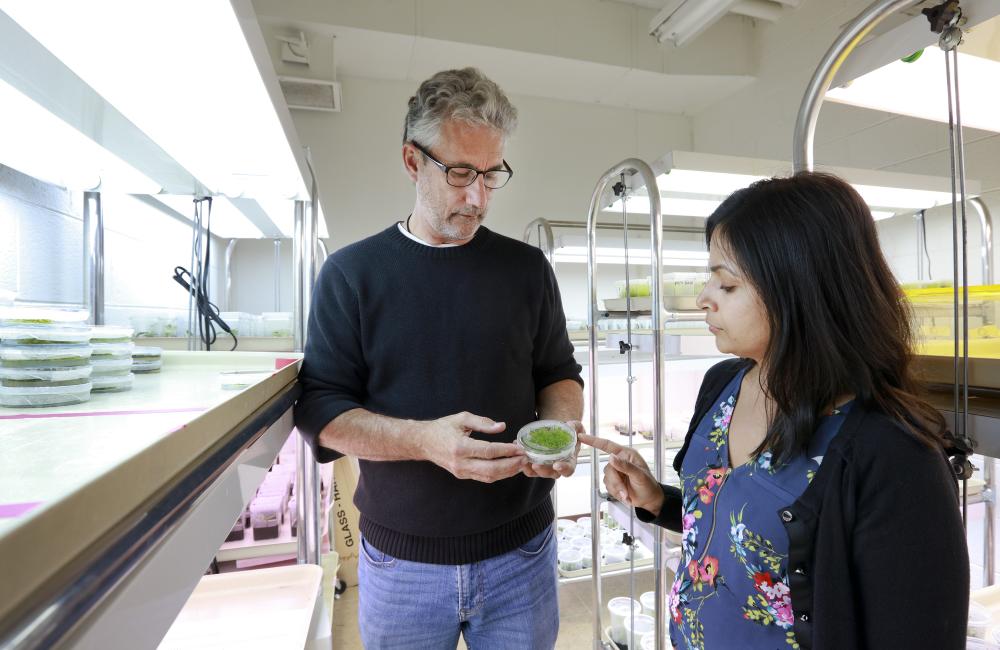A conversation with ORNL’s Jerry Tuskan
The new DOE Center for Bioenergy Innovation led by ORNL is focused on accelerating the development of specialty plants and microbial systems to support a biobased economy. ORNL Corporate Fellow Jerry Tuskan, CBI’s director and chief executive officer, sat down with ORNL Review to discuss CBI’s initial five- year mission and the legacy of biofuels research at ORNL.
What is CBI’s mission?
CBI’s mission is to accelerate the development of advanced biofuels for the displacement of transportation fuels such as gasoline. Our goal is to move the conversion of plant biomass into advanced gasoline drop-in substitutes like butyl acetate, or butanol, which have fuel properties similar to those of gasoline. This is different from the mission of the previous ORNL-based BioEnergy Science Center, which focused on ways to improve mostly ethanol production.
Another CBI difference is a concentration on new uses for lignin. Currently, lignin is the leftover portion of biomass used mostly to generate heat and steam to fuel the conversion of carbohydrates
into alcohols. But there are potentially higher-value products from lignin. Lignin can be used to create advanced materials, and we have done a lot of work here using lignin to create carbon fiber. We now want to look at converting lignin into chemicals. Rather than using petroleum-based chemical precursors, we hope to create new plant-based precursors.
We will also be focused on sustainability as part of an effort to minimize competition with food crops. In a biobased economy, we will target the use of marginal lands not particularly well suited to agriculture, where you more commonly run into drought. We want to create bioenergy feedstock plants that will use water efficiently. Another element of sustainability is to create crops that are pest and pathogen resistant. If we develop a viable biofuels economy, we’re looking at capturing 20 million to 40 million acres of marginal land, which will inevitably attract pests and pathogens.
What techniques will you use to accomplish these goals?
To create better bioenergy crops, we will leverage the genome- wide association study that we developed in poplar trees during BESC. This approach to studying an organism’s genome allows us to link traits to the genes that cause variation in biomass quality or quantity. We have numerous examples of how that has worked successfully for ethanol production. We’re now bringing those same approaches to bear on increasing the value of lignin, producing butanol, and promoting sustainability.
On the conversion side, we’re moving strongly into the concept of consolidated bioprocessing with cotreatment, that is, deconstructing biomass and fermenting resulting sugars all in one bioreactor. BESC discovered that if you apply minimal milling, or grinding, of plant material during the deconstruction phase, you can release greater than 90 percent of the sugar. As a result, we’re developing and refining this process as our sole conversion platform.
Finally, on lignin, we’re using a concept called biological funneling, where we take native lignin and use microbial biocatalysts to change it into high-value chemical precursors and feedstocks.
These three techniques encompass the main technical thrust of CBI, namely rapid domestication, or the rational engineering of plants and microbes for desired traits. We’re applying techniques to rapidly domesticate our feedstocks (chiefly poplar and switchgrass), engineer microorganisms that perform consolidated bioprocessing, and advance microorganisms that will convert lignin to products.
Why is this mission important?
Much of the fossil fuels we use for transportation are derived from offshore sources that come with associated economic and fuel security tradeoffs. Our mission is important because we can displace some of our reliance on offshore petroleum. It’s also important because we believe biofuels are easier on the environment, in terms of both production and consumption. Finally, the renewable energy sector of the economy is growing rapidly. CBI’s success can result in more domestic jobs, particularly in rural areas.




